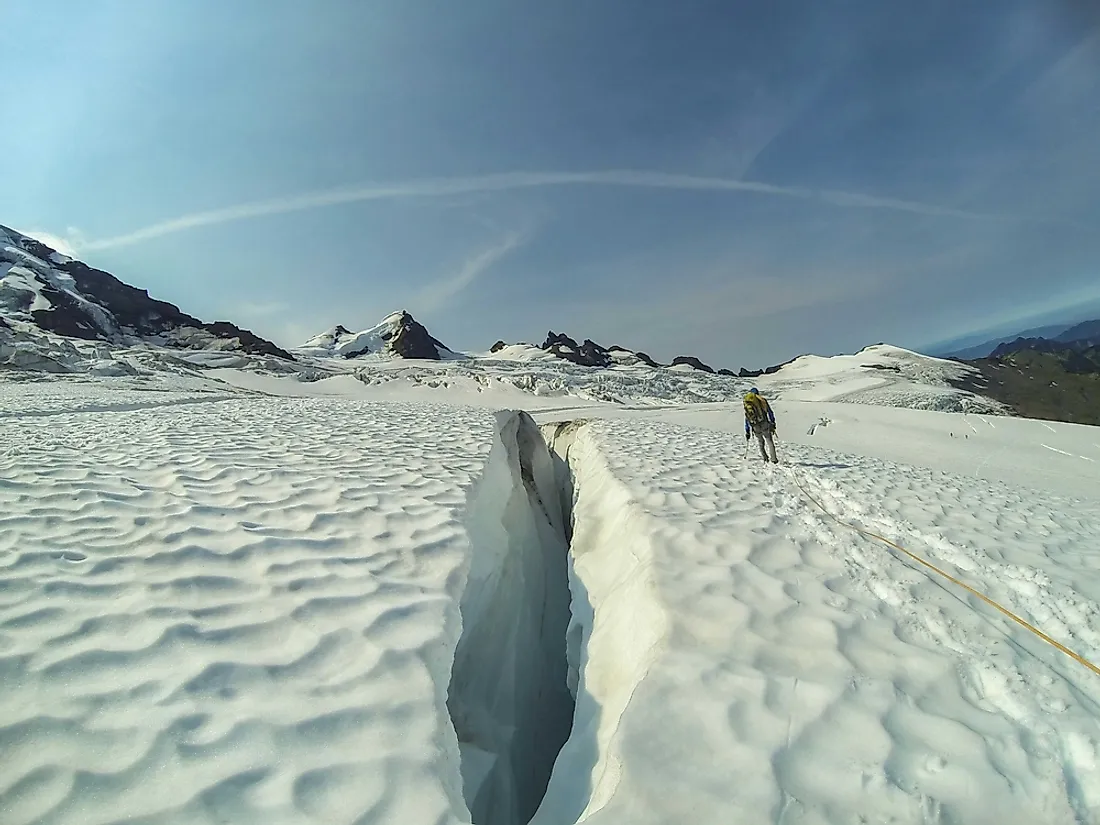What Are The Differences Between A Crevasse And A Crevice

What Is a Crevasse?
A crevasse originated from French word "crevace” meaning wide crack that can run from a few meters to kilometers found in a snowfield or glacier. The hole is formed when huge pieces of ice separate from one another leaving a space between them. This hole is dangerous to mountain climbers or a person skiing in the snow. Such a crater has sharp wedge-shaped steep openings and may contain melted ice which can be up to one hundred meters deep.
What Is a Crevice?
A crevice, on the other hand, is common in the dry land or rocks. The naturally formed crack or hole on the surface of the earth can be as a result of an earthquake or natural weathering process. A crevice can offer important information to geologists on rock layers and minerals beneath. The word crevice is also used in day-to-day communication where it is used to mean an opening between two surfaces.
Differences Between a Crevasse and a Crevice
A crevasse occurs in wet places mainly covered with snow and is therefore not easily visible, but a crevice will occur on dry land and can be easily identified. Thus, crevasse is very dangerous to a human being or to animals such as the polar bears which can fall into it and die due to hypothermia. A crevice is less dangerous, some reptiles and bats can even live in it. They form a safe habitat for breeding, especially for the nocturnal animals. Lost mountaineers can also seek refuge in a crevice.
A crevasse is dangerous and can lead to loss of life. The depth cannot be gauged from the surface. A place that seems stable may give way, posing a threat whereas how far and deep a crevice goes can be seen from far, therefore, one can know if it is dangerous or not. A crevice can be useful to those who love rock climbing since the small ones can give the hands a grip or can be used to attach a bolt or rope
A crevasse is less permanent compared to a crevice since its depth, width, and durability will depend on climatic changes. When it is hot, it will melt and become wider and more dangerous. A crevice is almost permanent since it is formed on the rocks
At formation, a crevasse occurs due to different sliding speeds of two layers of a glacier, especially if it is moving in a steep gradient. The pace will make the different stacks settle in different locations leaving a space between them. This space can be small or big depending on the amount of liquid therein. A crevice, on the other hand, is gradually formed when two hard surfaces move apart and can either be a small hole by the roadside or a huge crater. Crevices are also common in areas prone to high-velocity earthquakes.
Dangers of Crevasses
There have been deaths in the crevasse such as the one witnessed in Iceland in March 2017 when an American tourist fell in the Silfra crevasse. This makes it important to always have a tour guide when moving in a crevasse prone area. Signboards are also put to alert people in case there is a dangerous crevasse or crevice ahead. The Khumbu glaciers found in the Nepal range on Mt. Everest is known to have crevasses that open swiftly, making Everest one of the most difficult mountains to climb.











